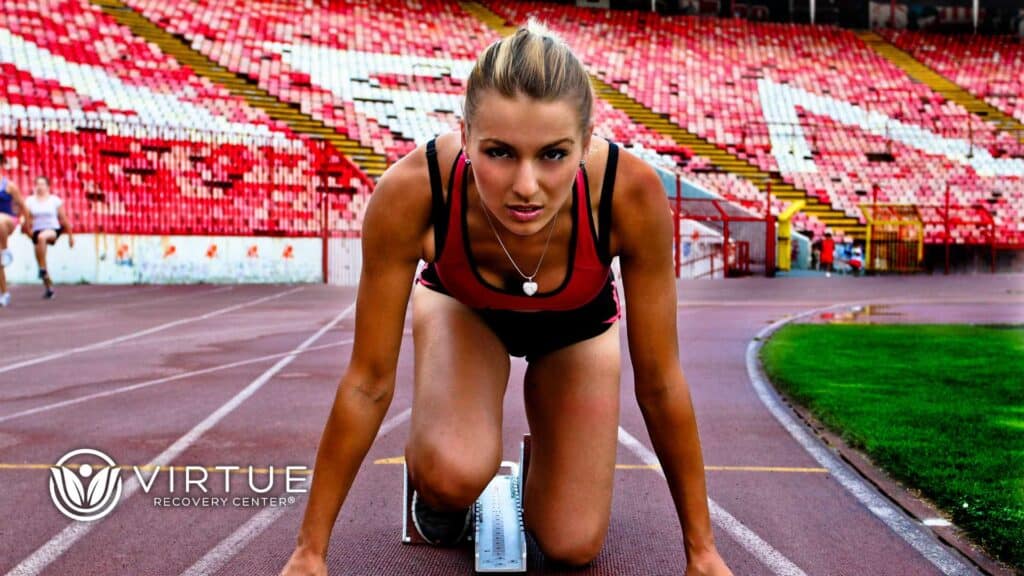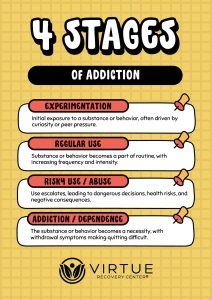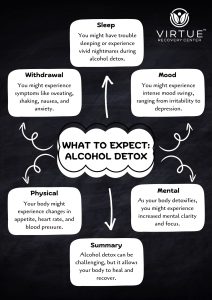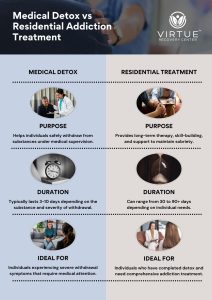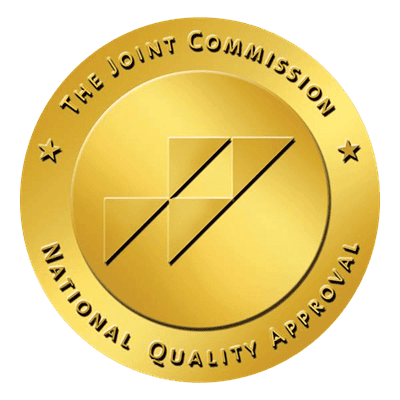Key Takeaways
- Athletes face a higher risk of developing eating disorders compared to non-athletes, especially in aesthetic, endurance, and weight-class sports.
- Common risk factors include pressure to perform, maintaining body image standards, and the physical demands of their sport.
- Eating disorders among athletes can go unnoticed due to stigma and the belief that these issues don’t affect high-performing individuals.
- Disordered eating behaviors, like binge eating, restrictive eating, and excessive exercise, are prevalent in both male and female athletes.
- Early intervention and treatment are critical for the health and performance of athletes struggling with eating disorders.
Introduction For Athletes With Eating Disorders
Athletes are often admired for their strength, discipline, and performance, but behind the scenes, many struggle with the pressures that come with these expectations. Maintaining a certain body weight or appearance is often seen as crucial to success in sports. As a result, athletes are more prone to developing eating disorders than the general population. In this article, we’ll explore the prevalence of eating disorders in athletes, the risks they face, and the importance of recognizing and treating these conditions.
The Prevalence of Eating Disorders Among Athletes
Eating disorders, including anorexia nervosa, bulimia nervosa, and binge eating disorder, are surprisingly common in athletes. The demands of specific sports, especially those emphasizing leanness or aesthetics, put athletes at a higher risk. Statistics show that athletes report higher rates of excessive exercise than non-athletes, often as a compensatory behavior for disordered eating.
Studies have found that female athletes are twice as likely as male athletes to engage in eating disorder behaviors, with both men (77%) and women (80%) in weight-dependent sports reporting compensatory behaviors. This includes sports like gymnastics, figure skating, and long-distance running, where weight plays a significant role in performance.
Risk Factors & Effects of Eating Disorders in Athletes
Several factors increase the risk of athletes developing eating disorders. First, the pressure to meet strict body weight or appearance standards can lead athletes to unhealthy eating patterns. For instance, athletes in aesthetic sports, such as gymnastics and figure skating, often feel pressured to maintain a lean, toned physique to meet judges’ expectations.
Higher rates of eating disorders are seen in athletes participating in aesthetic, endurance, and weight-class sports. Research shows that 42% of women in aesthetic sports, such as gymnastics and diving, had subclinical or clinical eating disorders, compared to lower rates in other types of sports.
Common Symptoms & Signs of Eating Disorders in Athletes
Disordered eating behaviors in athletes can be challenging to detect because these behaviors may be viewed as part of the training routine. For example, excessive exercise, strict dieting, and fasting are often encouraged in some sports environments. However, these behaviors can quickly spiral into more severe problems.
In a study of NCAA Division I athletes, 26.8% of female athletes reported engaging in disordered eating behaviors, while up to 84% of collegiate athletes reported some form of maladaptive eating or weight control behaviors, such as binge eating or self-induced vomiting.
Warning signs include sudden changes in eating habits, weight fluctuations, fatigue, and preoccupation with food or body image. Coaches, teammates, and family members must remain vigilant, as these signs can easily be mistaken for dedication to the sport.
The Stigma Around Eating Disorders in Sports
Stigma is a significant barrier preventing athletes from seeking treatment for eating disorders. Many athletes believe that acknowledging an eating disorder will make them appear weak or less dedicated to their sport. Only 27% of athletic trainers feel confident in identifying an athlete with an eating disorder, and only 38% feel comfortable discussing disordered eating behaviors with athletes.
This stigma, combined with the secretive nature of eating disorders, means that many athletes go untreated, allowing their condition to worsen over time. By the time symptoms become apparent, they may have already developed into more severe health issues.
The Importance of Early Intervention and Treatment to Help Athletes
Early intervention is crucial for athletes struggling with eating disorders. Untreated eating disorders can lead to severe physical and mental health problems, including fatigue, decreased performance, and an increased risk of injury. For example, athletes with eating disorders are at a higher risk of developing long-term health issues, such as osteoporosis and heart problems, due to malnutrition and extreme weight control behaviors.
Treatment options for athletes with eating disorders typically involve a combination of therapy, nutrition counseling, and medical support. Sports medicine specialists and mental health professionals play an important role in helping athletes recover and regain their physical and mental health. By addressing the root causes of the disorder and providing the necessary support, athletes can return to their sport healthier and more resilient.
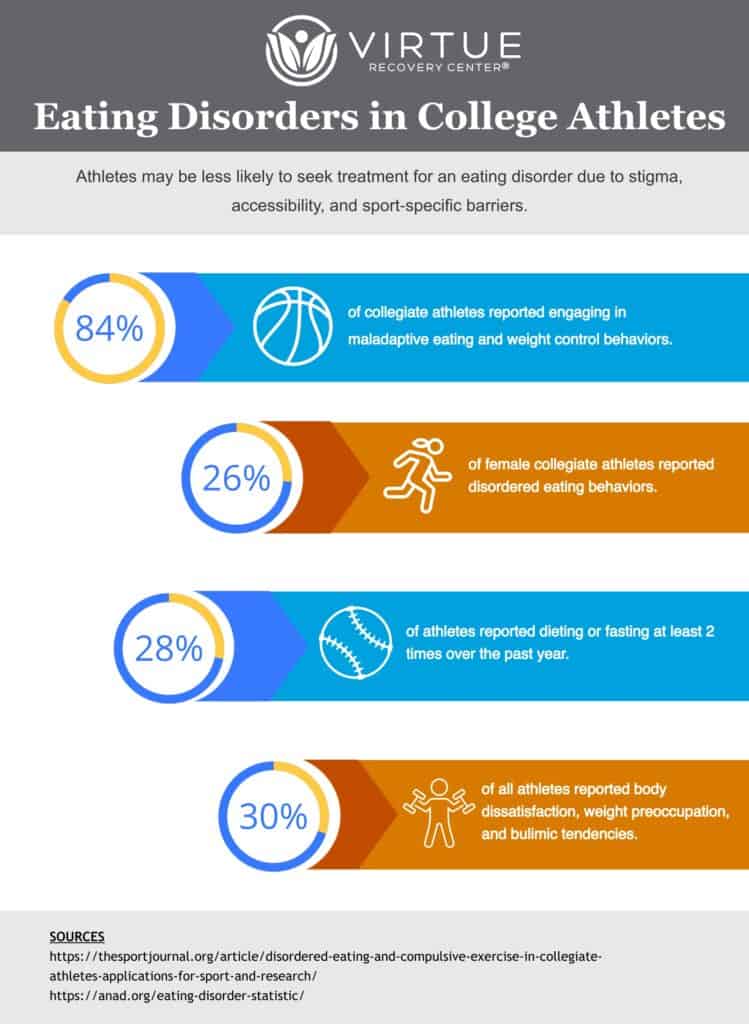
Conclusion
Athletes are not immune to the dangers of eating disorders. The pressure to perform and maintain a specific body image often makes them more susceptible. Understanding the risk factors and recognizing the signs of disordered eating is crucial in providing the necessary support and treatment. If you or someone you know is struggling with an eating disorder in sports, Virtue Recovery Las Vegas is here to help. Call us today at 866-520-2861 to begin the journey toward recovery.
FAQs About Eating Disorders in Athletes
What are the most common eating disorders in athletes?
The most common eating disorders in athletes include anorexia nervosa, bulimia nervosa, and binge eating disorder, especially in sports that emphasize body image and weight.
Why are athletes at a higher risk of developing eating disorders?
Athletes face increased pressure to meet performance and body image standards, which can lead to unhealthy eating patterns and behaviors.
How do eating disorders affect athletic performance?
Eating disorders can lead to fatigue, malnutrition, and a higher risk of injury, ultimately impacting an athlete’s performance and health.
What should I do if I suspect an athlete has an eating disorder?
If you suspect an athlete has an eating disorder, encourage them to seek help from a medical professional or sports medicine specialist. Early intervention is key to recovery.
How can athletes recover from eating disorders?
Athletes can recover through therapy, nutrition counseling, and support from medical professionals, addressing both the physical and mental aspects of the disorder.
What are the signs of an athlete with an eating disorder?
Signs may include rapid weight loss, preoccupation with food, excessive exercise, and avoiding meals or food-related events. Athletes may also exhibit fatigue, injuries that don’t heal, and changes in performance.
Why do athletes practice restrictive eating?
Athletes may restrict their food intake to meet the demands of sports that emphasize weight, body shape, or performance, often believing it will enhance their ability to compete. Unfortunately, this behavior can lead to energy deficiency and health issues.
What is disordered eating in elite athletes?
Disordered eating in elite athletes includes unhealthy behaviors like excessive calorie restriction, over-exercising, or purging. This can severely impact their physical and mental health, sports performance, and long-term well-being.
What sport has the most athletes with eating disorders?
Sports that emphasize body weight and appearance, such as gymnastics, figure skating, and distance running, tend to have the highest rates of eating disorders among athletes.
Can ARFID go away?
Avoidant/Restrictive Food Intake Disorder (ARFID) can improve with treatment, but it may take time. Therapy, nutritional counseling, and gradual exposure to new foods can help manage and overcome ARFID.
What triggers ARFID?
ARFID is often triggered by negative experiences related to food, such as choking or gastrointestinal distress, as well as sensory sensitivities and anxiety around eating.
What are the three types of ARFID?
The three types of ARFID are 1) sensory avoidance due to the texture, smell, or taste of food, 2) fear of aversive consequences like choking or vomiting, and 3) lack of interest in eating or food.
Can ARFID turn into anorexia?
While ARFID and anorexia are different disorders, untreated ARFID can lead to extreme weight loss and malnutrition, which may resemble anorexia. However, the underlying motivations for food avoidance are distinct.
Can sports cause eating disorders?
Yes, the pressures in certain sports, especially those emphasizing weight, thinness, or appearance, can increase the risk of developing eating disorders, particularly among athletes who strive for perfection or feel pressure to meet specific body standards.
What is RED-S?
RED-S stands for Relative Energy Deficiency in Sport. In this condition, athletes don’t consume enough calories to support their energy expenditure, which affects performance and can lead to health issues like decreased bone density, menstrual dysfunction, and impaired psychological health.
Resources
https://anad.org/eating-disorder-statistic/
https://jeatdisord.biomedcentral.com/articles/10.1186/s40337-020-00323-2

